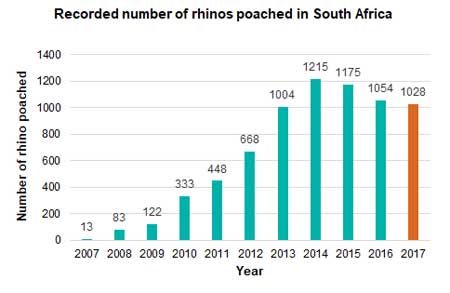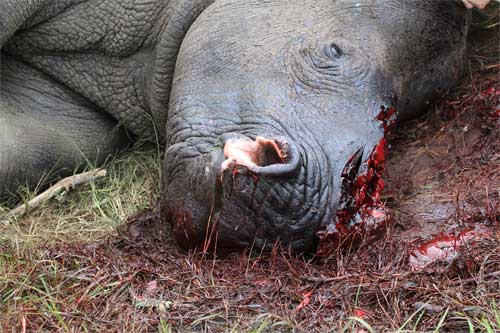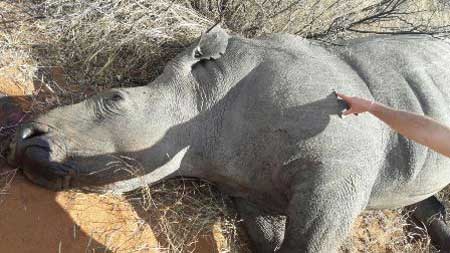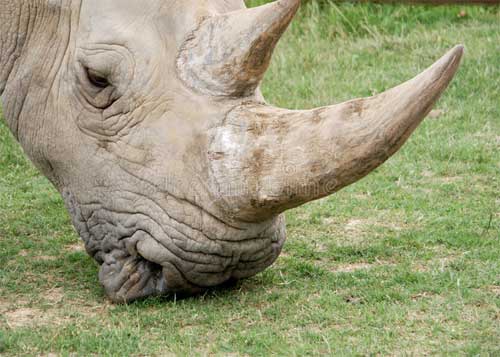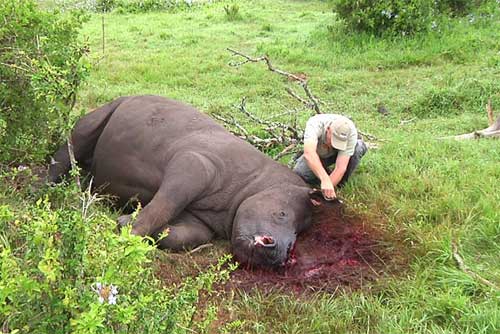Introduction
Rhino poaching is fast forcing the Rhino to extinction. Rhino horn is more valuable than gold, and is an ingredient in Traditional Chinese Medicine that is much in demand.
Since 2008 South Africa has lost over 7 000 rhinos. Game Reserves, where animals such as Rhino’s and other animals can be bread for sport, are easy targets for poachers. The Rangers are targeted on a frequent basis and although they are governed by strict rules of engagement, poachers are armed and do not hesitate to shoot on sight.
Poverty does not drive all Poaching. Other criminal activity such as vehicle hijacking, ATM bombing, gun-runners and murder all pose an even greater risk to all types of Rhino’s and other wild animals.
Image: Kruger National Park staff walk near the carcass of a rhinoceros killed by poachers at Houtboschrand in the southern part of Kruger National Park, northeastern South Africa, on November 27, 2013

In this article we look at Rhino Poaching in detail, and how we can all hep stop this barbaric act together.
Ad:

